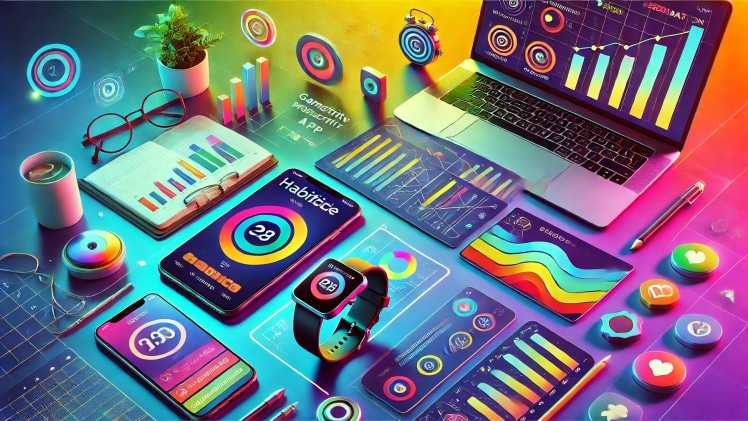Motivation can be tricky. Whether it’s sticking to a workout, managing finances, or staying productive, many of us struggle to keep on track. This is where gamification steps in—a technique that makes ordinary tasks exciting by turning them into games. From earning rewards to tackling challenges, gamified apps have found a way to make even the most mundane activities engaging. If you’re curious, even the quirky Mr Beast Plinko App offers a gamified take on simple decision-making. Why not give it a try? You might just find yourself leveling up in ways you never expected! Let’s explore how this trend is reshaping our daily routines.
What is Gamification?
At its core, gamification adds game elements—like points, leaderboards, and achievements—to non-game activities. The concept is simple: turn everyday tasks into mini-adventures, giving users a sense of accomplishment and fun. For example, apps might give you points for completing a task or badges for hitting milestones. This taps into the brain’s reward system, making the activity feel less like work and more like play.
In fact, studies show that 67% of employees say gamification makes them more productive at work. This principle is now widely applied across industries, including fitness, education, productivity, and even personal finance.
Gamified Productivity: Making Work Feel Like Play
Keeping on top of tasks can feel like a never-ending battle. Gamified productivity apps turn this struggle into a fun challenge, encouraging users to stay focused and complete their to-do lists.
Examples:
- Habitica: This app transforms your life into a role-playing game. Completing tasks earns points and unlocks rewards, while skipping responsibilities “damages” your in-game avatar.
- Forest: Helps you stay focused by “planting trees” when you resist distractions. The longer you focus, the bigger your virtual forest grows—and for added impact, the app plants real trees through partner programs.
These tools combine fun and functionality, keeping users engaged while boosting their productivity.
Health and Fitness: Turning Sweat Into Rewards
Exercising regularly or sticking to a diet isn’t easy for everyone. Health and fitness apps use gamification to make achieving fitness goals fun and social.
Apps That Get You Moving:
- Strava: Loved by runners and cyclists, Strava tracks your workouts and lets you compete with friends in weekly challenges.
- Fitbit: Tracks steps, sleep, and activity, rewarding users with badges and encouraging friendly competition with leaderboards.
- Nike Training Club: Offers structured workouts with milestones and progress tracking to keep you engaged.
These apps create a sense of community and accomplishment, helping users stay committed to their health goals.
Financial Management: Gamifying Your Money Habits
Managing money is often a source of stress. Gamified financial apps make the process less daunting and more interactive by adding elements of fun.
Examples of Money-Tracking Apps:
- YNAB (You Need A Budget): Helps you set financial goals and rewards you with progress reports and achievements for sticking to your budget.
- Qapital: Allows users to set up savings rules (like saving $5 every time you skip coffee) and track their progress visually.
These tools encourage users to save, budget, and spend wisely without feeling overwhelmed by financial jargon.
Education: Making Learning Addictive
Learning doesn’t have to be boring. Educational apps use gamification to turn lessons into games, making learning fun and accessible for everyone.
Apps That Make Education Fun:
- Duolingo: A well-known language-learning app that uses streaks, points, and leaderboards to keep users engaged.
- Khan Academy: Rewards users with badges for completing lessons and encourages progress through structured challenges.
- Quizlet: Turns studying into a game with flashcards and quizzes, tracking your improvement over time.
Whether you’re mastering a new language or tackling math problems, gamified education tools keep learners coming back for more.
Why Gamification Works
Gamification taps into our natural drive for rewards and progress. It’s not just about completing tasks; it’s about feeling good while doing them. Here’s why it’s so effective:
- Motivation: Rewards like points or badges create a sense of achievement.
- Competition: Leaderboards and challenges drive people to push themselves further.
- Engagement: Turning tasks into fun activities keeps users interested over the long term.
In fact, apps that use gamification report a 22% increase in user engagement on average, proving just how powerful this tool can be.
Conclusion: Leveling Up Everyday Life
Gamification is more than just a trend; it’s a way to transform how we approach daily routines. Whether you’re staying productive with Habitica, getting fit with Strava, or learning a new language on Duolingo, gamified apps bring excitement and motivation to the table. By making our goals fun and rewarding, they help us stay on track—and even enjoy the journey. So why not turn your life into a game? With the right apps, you can make every day feel like a win.


